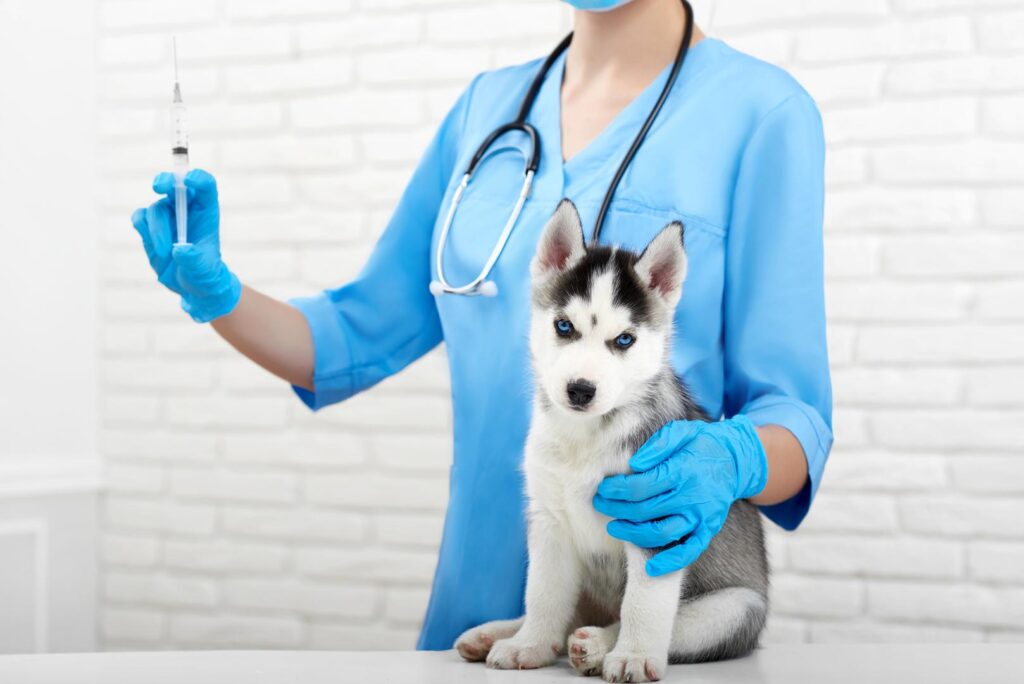December abounds with holiday celebrations, and nothing can spoil good cheer like an emergency trip to the veterinary clinic. The American Veterinary Medical Association (AVMA) recommended these tips that can help keep your winter holiday season from becoming not-so-happy – for your pet and for you.
Plan in advance
Make sure you know how to get to your 24/7 emergency veterinary clinic before there’s an emergency. Talk with your veterinarian in advance to find out where you would need to take your pet.
Food
Keep people food away from pets. If you want to share holiday treats with your pets, make or buy treats formulated just for them. The following people foods are especially hazardous for pets:
• Chocolate is an essential part of the holidays for many people, but it is toxic to dogs and cats. Although the toxicity can vary based on the type of chocolate, the size of your pet, and the amount they ate, it’s safer to consider all chocolate off limits for pets.
• Other sweets and baked goods also should be kept out of reach. Not only are they often too rich for pets; an artificial sweetener often found in baked goods, candy and chewing gum, xylitol, has been linked to liver failure and death in dogs.
• Turkey and turkey skin – sometimes even in small amounts – can cause a life-threatening condition in pets known as pancreatitis.
• Table scraps – including gravy and meat fat –also should be kept away from pets. Many foods that are healthy for people are poisonous to pets, including onions, raisins and grapes. During the holidays, when our own diets tend toward extra-rich foods, table scraps can be especially fattening and hard for animals to digest and can cause pancreatitis.
• Yeast dough can cause problems for pets, including painful gas and potentially dangerous bloating.
Decorating
Greenery, lights and Christmas trees can make the holidays festive, but they also pose risky temptations for our pets.
• Christmas trees can tip over if pets climb on them or try to play with the lights and ornaments. Consider tying your tree to the ceiling or a doorframe using fishing line to secure it.
• Water additives for Christmas trees can be hazardous to your pets. Do not add aspirin, sugar, or anything to the water for your tree if you have pets in the house.
• Ornaments can cause hazards for pets. Broken ornaments can cause injuries, and ingested ornaments can cause intestinal blockage or even toxicity. Keep any homemade ornaments, particularly those made from salt-dough or other food-based materials, out of reach of pets.
• Tinsel and other holiday decorations also can be tempting for pets to eat. Consuming them can cause intestinal blockages, sometimes requiring surgery. Breakable ornaments or decorations can cause injuries.
• Electric lights can cause burns when a curious pet chews the cords.
• Flowers and festive plants can result in an emergency veterinary visit if your pet gets hold of them. Amaryllis, mistletoe, balsam, pine, cedar, and holly are among the common holiday plants that can be dangerous and even poisonous to pets who decide to eat them. Poinsettias can be troublesome as well. The ASPCA offers lists of plants that are toxic to dogs and cats.
• Candles are attractive to pets as well as people. Never leave a pet alone in an area with a lit candle; it could result in a fire.
• Potpourris should be kept out of reach of inquisitive pets. Liquid potpourris pose risks because they contain essential oils and cationic detergents that can severely damage your pet’s mouth, eyes and skin. Solid potpourris could cause problems if eaten.
Hosting parties and visitors
Visitors can upset pets, as can the noise and excitement of holiday parties. Even pets that aren’t normally shy may become nervous in the hubbub that can accompany a holiday gathering. The following tips will reduce emotional stress on your pet and protect your guests from possible injury.
• All pets should have access to a comfortable, quiet place inside if they want to retreat. Make sure your pet has a room or crate somewhere away from the commotion, where your guests won’t follow, that it can go to anytime it wants to get away.
• Inform your guests ahead of time that you have pets or if other guests may be bringing pets to your house. Guests with allergies or compromised immune systems (due to pregnancy, disease, or medications/ treatments that suppress the immune system) need to be aware of the pets (especially exotic pets) in your home so they can take any needed precautions to protect themselves.
• Guests with pets? If guests ask to bring their own pets and you don’t know how the pets will get along, you should either politely decline their request or plan to spend some time acclimating the pets to each other, supervising their interactions, monitoring for signs of a problem, and taking action to avoid injuries to pets or people.
• Pets that are nervous around visitors should be put it in another room or a crate with a favorite toy. If your pet is particularly upset by houseguests, talk to your veterinarian about possible solutions to this common problem.
• Exotic pets make some people uncomfortable and may themselves be more easily stressed by gatherings. Keep exotic pets safely away from the hubbub of the holidays.
• Watch the exits. Even if your pets are comfortable around guests, make sure you watch them closely, especially when people are entering or leaving your home. While you’re welcoming hungry guests and collecting coats, a four-legged family member may make a break for it out the door and become lost.
• Identification tags and microchips reunite families. Make sure your pet has proper identification with your current contact information – particularly a microchip with up-to-date, registered information. That way, if they do sneak out, they’re more likely to be returned to you. If your pet isn’t already microchipped, talk to your veterinarian about the benefits of this simple procedure.
• Clear the food from your table, counters and serving areas when you are done using them – and make sure the trash gets put where your pet can’t reach it. A turkey or chicken carcass or other large quantities of meat sitting out on the carving table, or left in a trash container that is easily opened, could be deadly to your family pet. Dispose of carcasses and bones – and anything used to wrap or tie the meat, such as strings, bags and packaging – in a covered, tightly secured trash bag placed in a closed trash container outdoors (or behind a closed, locked door).
• Trash also should be cleared away where pets can’t reach it – especially sparkly ribbon and other packaging or decorative items that could be tempting for your pet to play with or consume.
When you leave the house
• Unplug decorations while you’re not around. Cats, dogs and other pets are often tempted to chew electrical cords.
• Take out the trash to make sure your pets can’t get to it, especially if it contains any food or food scraps.
Happy Holidays – Book Our Appointment
Reference : AVMA








